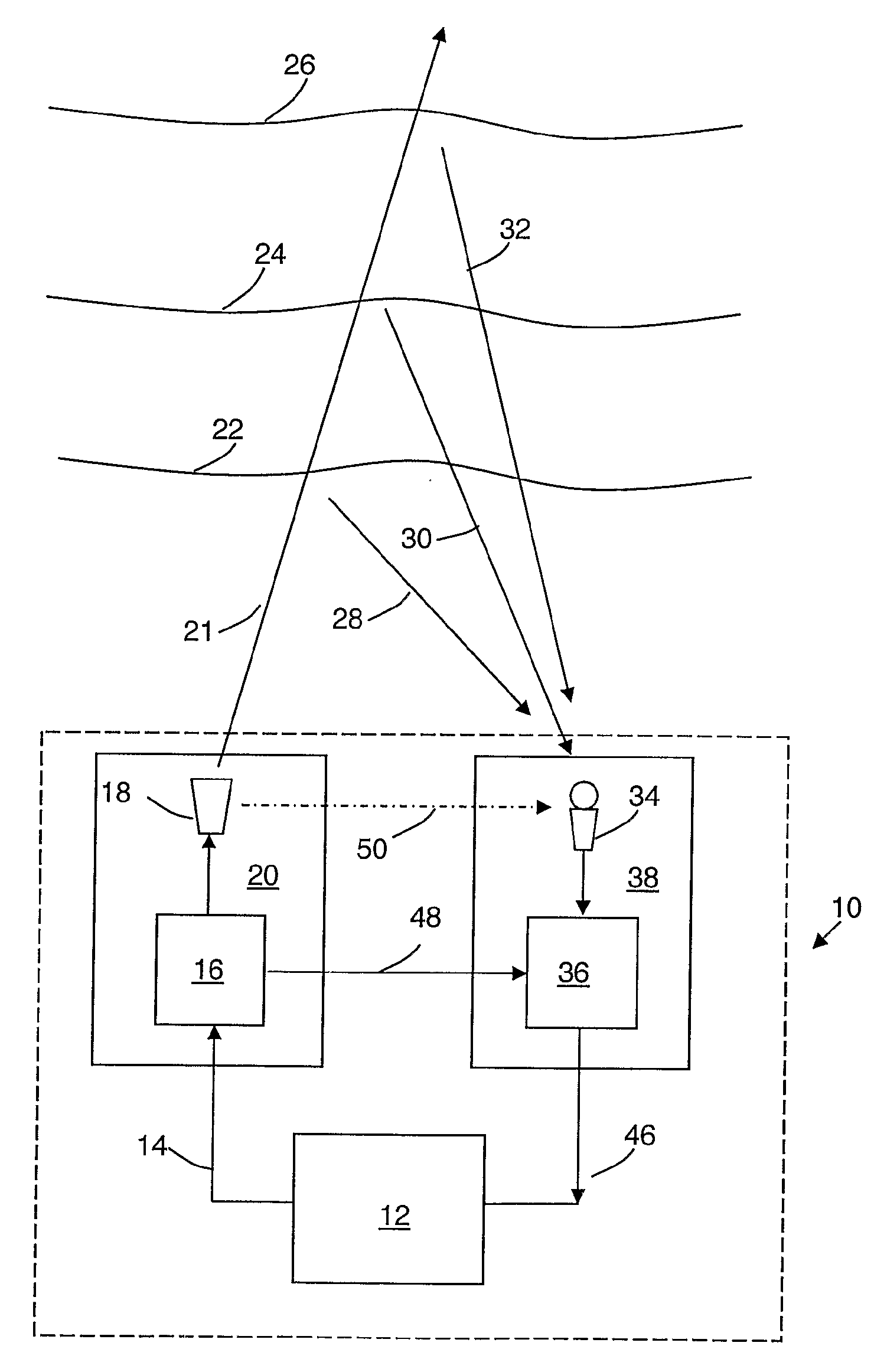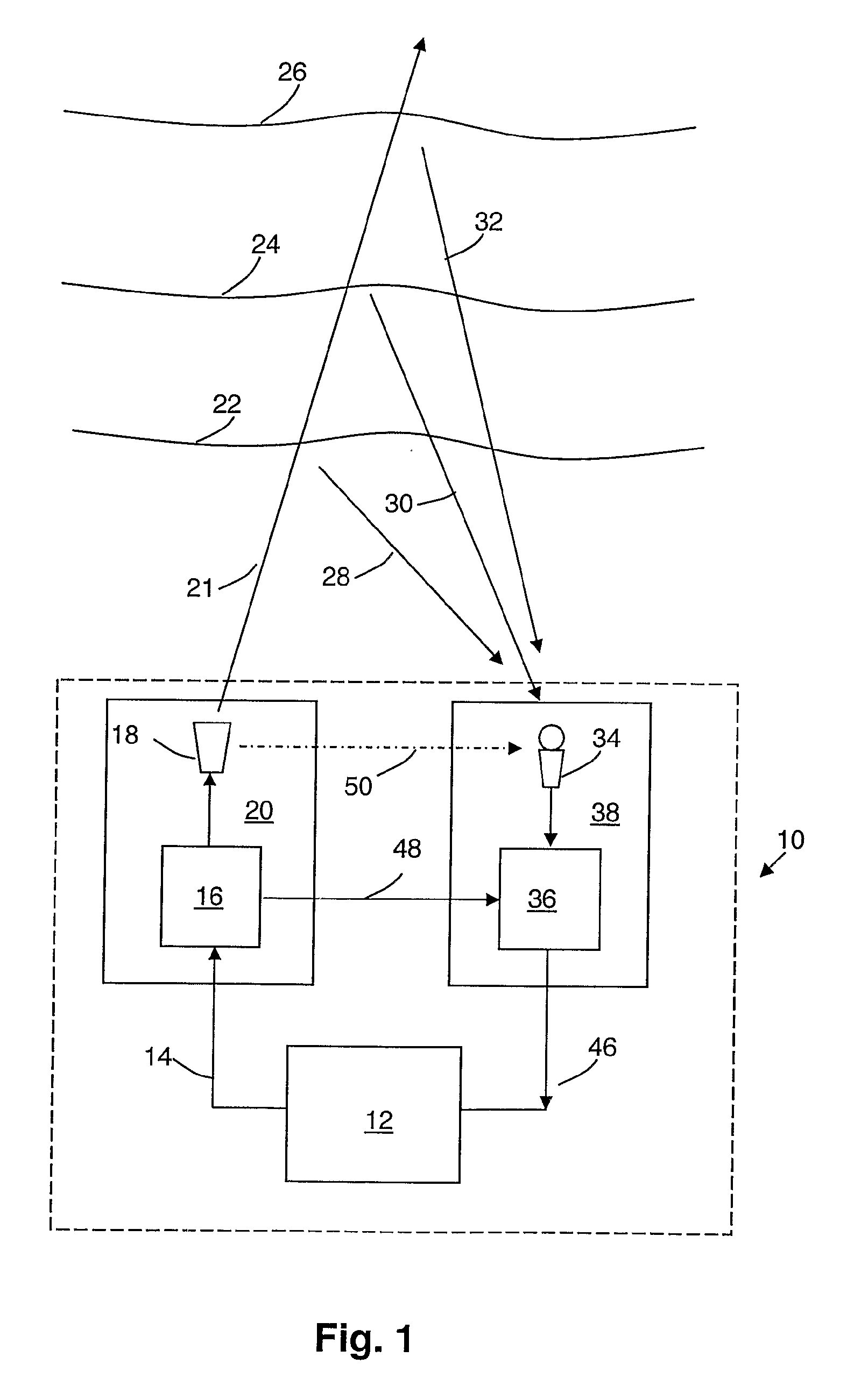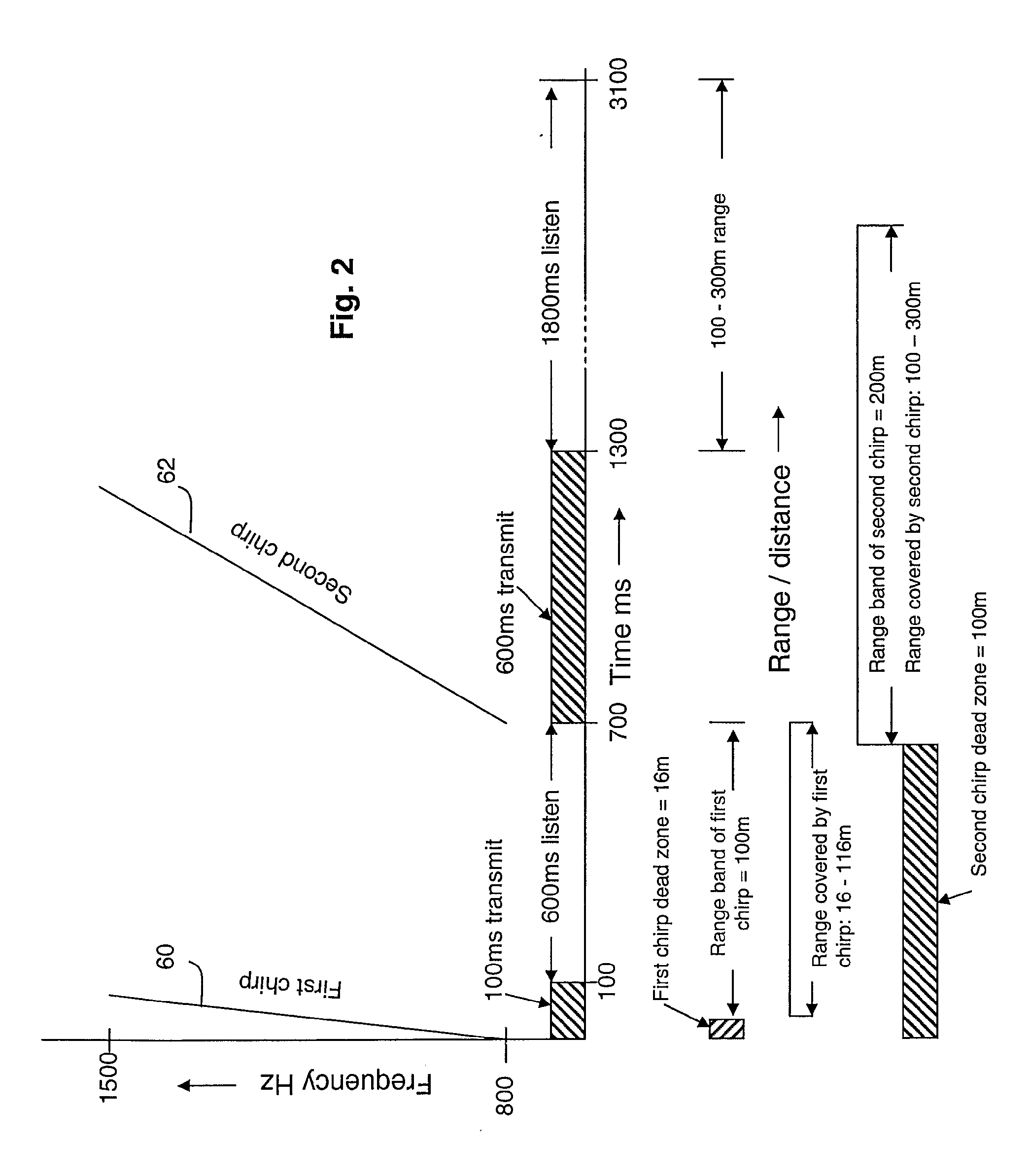Staged Sodar Sounding
a sodar sound and staged technology, applied in the field of sodar methods and apparatus for atmospheric sounding, can solve the problems of difficult pulse compression techniques, difficult to encode in any effective way, and the energy of the transmitted pulse will swamp the receiver, so as to achieve the effect of effective the same bandwidth and greater simplicity in the design of the receiver system
- Summary
- Abstract
- Description
- Claims
- Application Information
AI Technical Summary
Benefits of technology
Problems solved by technology
Method used
Image
Examples
Embodiment Construction
[0022]Before describing the chosen examples, it should be noted that the layout of transmitters and receivers and the processing of the received echoes can conveniently follow the teachings of our prior patent applications mentioned above. In those patent applications we showed how atmospheric anomalies could be graphically indicated, how the speed and bearing of airflow at any desired range (altitude) could be determined and depicted and how other variables such as temperature, humidity, wind-shear and total energy could be estimated or approximated. Accordingly, the description of received signal manipulation using DSP techniques (typically employing Fourier transformations) contained in our prior patent applications is incorporated herein and should be read in conjunction with the following description.
[0023]However, as will be described below, recent developments in acoustic transducers allow significant economies and simplifications with respect to the systems described in our ...
PUM
 Login to View More
Login to View More Abstract
Description
Claims
Application Information
 Login to View More
Login to View More - R&D
- Intellectual Property
- Life Sciences
- Materials
- Tech Scout
- Unparalleled Data Quality
- Higher Quality Content
- 60% Fewer Hallucinations
Browse by: Latest US Patents, China's latest patents, Technical Efficacy Thesaurus, Application Domain, Technology Topic, Popular Technical Reports.
© 2025 PatSnap. All rights reserved.Legal|Privacy policy|Modern Slavery Act Transparency Statement|Sitemap|About US| Contact US: help@patsnap.com



